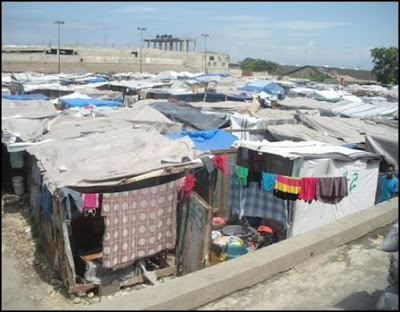
Continuing our series of guest posts from Concern Worldwide, a story about a rabbit farming program in Malawi that helps small-farmers when other crops fail. The story was written by Joseph Scott, who works as a Communications Officer for Concern in Malawi.
As the rains mercilessly pound the small village of Chikanga – Stefano and his neighbours hope that, this season, their crops will make it.
The rainfall pattern of the last two farming seasons has been unpredictable, with rains disappearing mid-season and leaving any crops to the mercy of the sun.
After two hours of thunderous downpours, Stefano, a father of five from Lilongwe, goes out to survey his rabbit kraal and chicken pen, dodging the children playing and shouting all around him.
Unlike the past years, Stefano has a sense of calm and security. Whether there are going to be floods, drought, or normal rainfall, he is better positioned than ever before to withstand potential disaster.
Stefano was living a difficult life before Concern reached him and helped him fortify his source of income through a rabbit farming project run in partnership with a local organization called Hope for the Heart
Through this project and others, Concern aims to improve the lives of extremely poor households in Lilongwe by providing them with a more reliable means of managing their own resources and a stable livelihood. Currently, 50 households are benefiting from the program and Stefano’s is one of them.
“When I went to receive the rabbits, I just did it for formality sake. All my hopes were dashed by the negative things my neighbors were saying. I started believing more in what people were saying, and how I would fail, that in what I could achieve from the project,” he recalls.
But circumstances forced him to invest more faith in his own potential.
Earlier this year, Stefano was struck by double tragedy. His maize crop withered as rains abruptly stopped during the flowering stage. Within the space of a few months, his sister died, leaving behind three children. As the only living uncle, Stefano took on the responsibility of their upbringing.
“I had no food, no money or anything to give to my now larger family. I knew being given the rabbits was an act of God. He gave me something small so that I should think big,” he said.
“I followed all the instruction on rabbit farming and within a few months,” said Stefano, “the rabbits gave birth.”
“When the rabbits came of age I sold some, and from the proceeds I managed to get money to buy things on the market like soap and maize meal to feed my family.”
From the income, Stefano now has twenty rabbits, two goats, and one pig with nine offspring. He has managed to increase crop production during the rainy season by using manure from the livestock and now cultivates low land using irrigation during the dry season.
“One small idea led to another,” he explained brimming with pride. “Never before had I dreamed of gardening, but now I have one. Some of the vegetables I use to feed my rabbits, some I use for food, and the rest I sell.”
“Those neighbors who were discouraging me are now the ones coming to me for advice on how to start a rabbit project. They can see that my life has changed for the better,” says Stefano.
Maloto Amos, Stefabo’s wife agrees: “We could not even manage to feed the children two times a day most of the year. But now we have changed the situation around: we can feed the children and send them to school thanks to the inspiration and training, as well as the support provided by the program. Even if Concern left us tomorrow our family could continue to grow more food and increase its assets.’’


